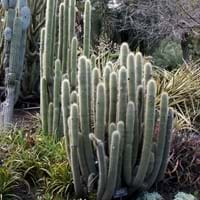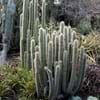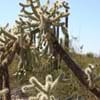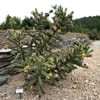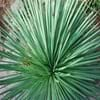Life Span
Perennial
Perennial
Type
Cactus
Flowering Plants
Origin
Central America, South America, Brazil
Italy, Southern Europe, western Balkans
Types
cleistocactus strausii, cleistocactus winteri, cleistocactus samaipatanus
not available
Habitat
Not Available
Islands, Not Available
USDA Hardiness Zone
12-15
7-10
AHS Heat Zone
12-10
7 - 4
Sunset Zone
12, 13, 21, 22, 23, 24
21,22
Habit
Upright/Erect
Upright/Erect
Flower Color
Red, Orange, Salmon
Lavender, Light Blue, White
Flower Color Modifier
Not Available
Bicolor
Fruit Color
Not Available
Non Fruiting Plant
Leaf Color in Spring
Not Available
Green, Light Green
Leaf Color in Summer
Not Available
Green, Light Green
Leaf Color in Fall
Not Available
Green, Light Green
Leaf Color in Winter
Not Available
Light Green
Leaf Shape
Succulent
Compound
Plant Season
Spring, Summer, Fall, Winter
Summer, Fall
Sunlight
Full Sun
Full Sun, Partial Sun
Growth Rate
Not Available
Medium
Type of Soil
Loam, Sand
Loam
The pH of Soil
Acidic, Neutral, Alkaline
Acidic, Neutral
Soil Drainage
Well drained
Average
Bloom Time
Spring, Summer
Early Summer, Summer, Late Summer
Tolerances
Drought
Heat Tolerance
Where to Plant?
Container, Ground, Pot
Ground, Pot
How to Plant?
Seedlings, Stem Cutting
From bulbs, Seedlings, Stem Planting
Plant Maintenance
Medium
Low
Watering Requirements
Reduce watering in winter
Average Water Needs, Do Not over Water, Never Over-water, Requires regular watering
In Summer
Lots of watering
Lots of watering
In Spring
Moderate
Moderate
In Winter
Average Water
Average Water
Soil pH
Acidic, Neutral, Alkaline
Acidic, Neutral
Soil Type
Loam, Sand
Loam
Soil Drainage Capacity
Well drained
Average
Sun Exposure
Full Sun
Full Sun, Partial Sun
Pruning
No pruning needed, Remove damaged leaves, Remove dead branches, Remove dead leaves
Remove damaged leaves, Remove dead branches, Remove dead leaves, Remove dead or diseased plant parts
Fertilizers
Fertilize the soil before planting, slow-release fertilizers
fertilize every 2-3 weeks while growing, fertilize in growing season
Pests and Diseases
Bacterial Stem Rot, fungus, Mealybugs, Spider mites
fungus
Plant Tolerance
Drought
Drought, Heat Tolerance
Flower Petal Number
Single
Single
Showy Foliage
No
Not Available
Foliage Texture
Bold
Not Available
Foliage Sheen
Not Available
Not Available
Attracts
Hummingbirds
Birds, Insects
Allergy
Not Available
Toxic
Aesthetic Uses
Landscape Designing, Showy Purposes, Wild gardens
Beautification, Landscape Designing, Showy Purposes
Beauty Benefits
Not Available
Not Available
Environmental Uses
Air purification
Air purification
Medicinal Uses
No Medicinal Use
Asthma, Cough, Unknown
Part of Plant Used
Whole plant
Flowers, Leaves
Other Uses
Florist trade and landscaping, Used as Ornamental plant
Decoration Purposes, Showy Purposes, Used as Ornamental plant
Used As Indoor Plant
No
Yes
Used As Outdoor Plant
Yes
Yes
Garden Design
Container, Houseplant, Rock Garden, Wall
Mixed Border, Wildflower
Botanical Name
CLEISTOCACTUS
CAMPANULA pyramidalis
Common Name
Cleistocactus
Chimney Bellflower
In Hindi
Cleistocactus
Chimney Bellflower
In German
Cleistocactus
Schornstein Glockenblume
In French
Cleistocactus
cheminée Bellflower
In Spanish
Cleistocactus
Chimenea Bellflower
In Greek
Cleistocactus
καμινάδα καμπανούλα
In Portuguese
Cleistocactus
chaminé Bellflower
In Polish
Kleistokaktus
komin Bellflower
In Latin
Cleistocactus
caminorum purgatores Bellflower
Phylum
Magnoliophyta
Tracheophyta
Class
Magnoliopsida
Magnoliopsida
Order
Caryophyllales
Asterales
Family
Cactaceae
Campanulaceae
Genus
Cleistocactus
Campanula
Clade
Angiosperms, Core eudicots, Eudicots
Angiosperms, Asterids, Eudicots
Tribe
Trichocereeae
Not Available
Subfamily
Cactoideae
Not Available
Number of Species
Not Available
Not Available
Difference Between Cleistocactus and Chimney Bellflower
If you are confused whether Cleistocactus or Chimney Bellflower are same, here are some features about those plants to help you choose better. Many people think that these two plants have the same characteristics, but one can see Cleistocactus and Chimney Bellflower Information and learn more about it. Fertilizers required for proper growth of Cleistocactus are Fertilize the soil before planting and slow-release fertilizers, whereas for Chimney Bellflower fertilizers required are fertilize every 2-3 weeks while growing and fertilize in growing season. Hence, one should know the basic difference between Cleistocactus and Chimney Bellflower if you are planning to have them in your garden to enhance its beauty.
<
Flowering PlantsImportance of Cleistocactus and Chimney Bellflower
Want to have the most appropriate plant for your garden? You might want to know the importance of Cleistocactus and Chimney Bellflower. Basically, these two plants vary in many aspects. Compare Cleistocactus and Chimney Bellflower as they differ in many characteristics such as their life, care, benefits, facts, etc. Every gardener must at least have the slightest clue about the plants he wants to plant in his garden. Compare their benefits, which differ in many ways like facts and uses. The medicinal use of Cleistocactus is No Medicinal Use whereas of Chimney Bellflower is Asthma, Cough and Unknown. Cleistocactus has beauty benefits as follows: Not Available while Chimney Bellflower has beauty benefits as follows: Not Available.
Compare Facts of Cleistocactus vs Chimney Bellflower
How to choose the best garden plant for your garden depending upon its facts? Here garden plant comparison will help you to solve this query. Compare the facts of Cleistocactus vs Chimney Bellflower and know which one to choose. As garden plants have benefits and other uses, allergy is also a major drawback of plants for some people. Allergic reactions of Cleistocactus are Not Available whereas of Chimney Bellflower have Toxic respectively. Having a fruit bearing plant in your garden can be a plus point of your garden. Cleistocactus has showy fruits and Chimney Bellflower has no showy fruits. Also Cleistocactus is flowering and Chimney Bellflower is not flowering . You can compare Cleistocactus and Chimney Bellflower facts and facts of other plants too.
